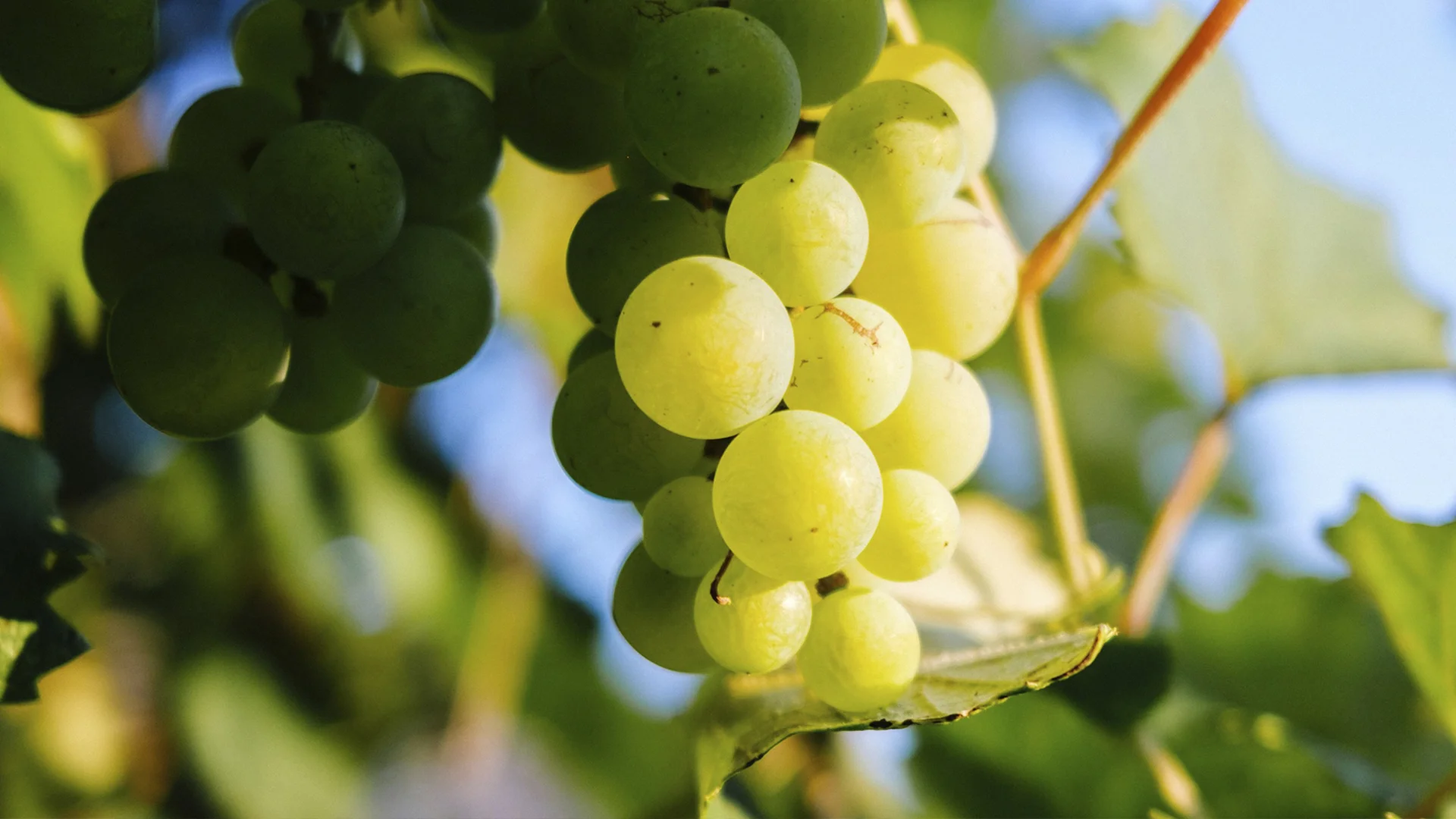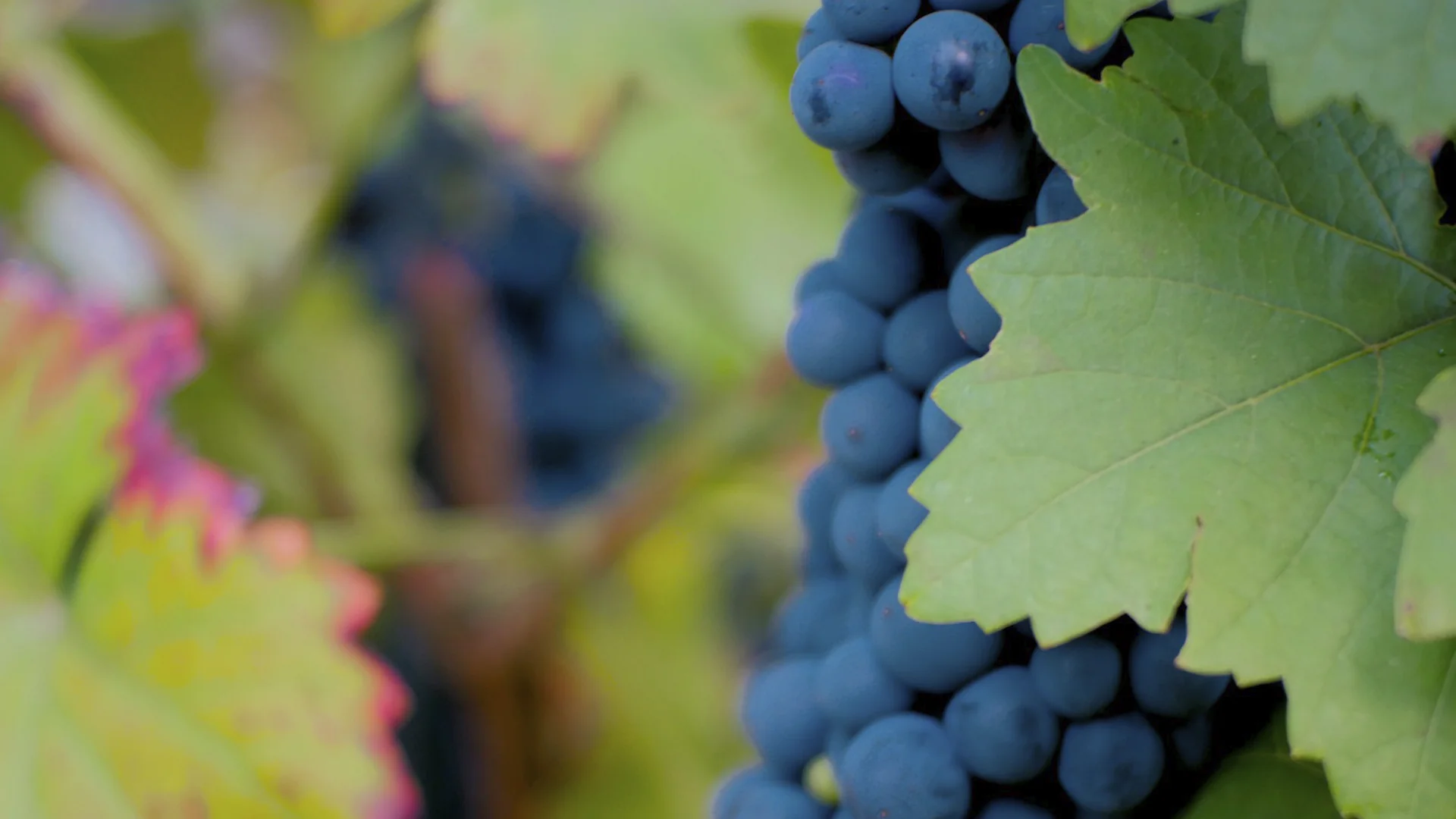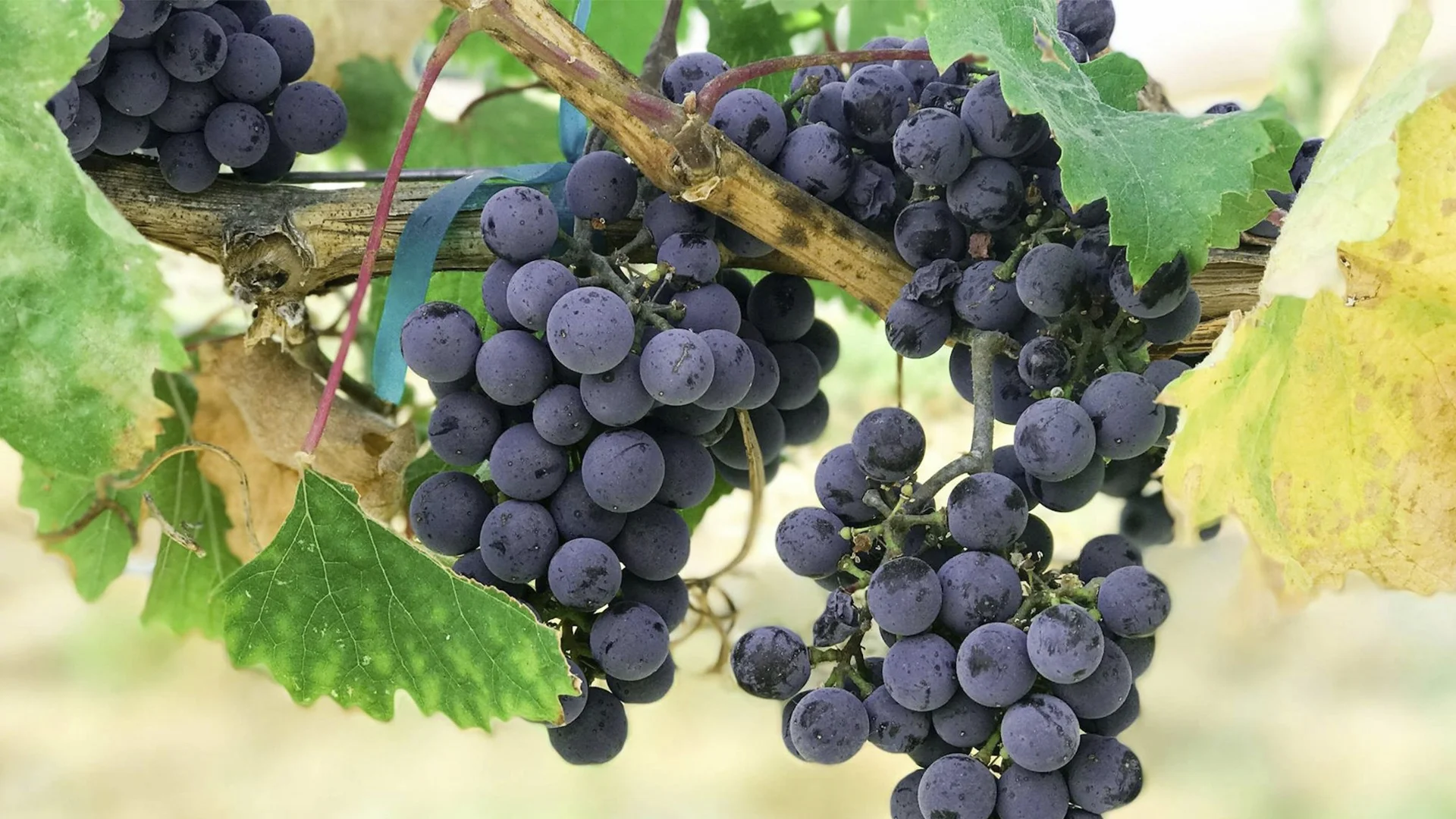
Nebbiolo boasts an allure that has made it the darling of Italian winemakers and the fascination of wine connoisseurs worldwide. The name of this grape is derived from "nebbia," the Italian word for fog, but within that fog lies a world of complexity and character that, once unveiled, will forever captivate your palate and imagination.
We'll delve into the keys to understanding Nebbiolo grapes. You'll discover the unique terroirs, the artistry of winemaking, and the profound impact of Nebbiolo on wines such as Barolo and Barbaresco, celebrated for their elegance, power, and longevity.
Whether you're a seasoned oenophile or just beginning your wine journey, this Nebbiolo grape in-depth guide promises to reveal the secrets of Nebbiolo, helping you appreciate its nuances, savour its flavours, and choose the perfect bottle to accompany your most memorable moments. So, let's raise our glasses and dive into the world of Nebbiolo—where every sip is an invitation to experience the essence of Italy's finest wines.
Originating in the picturesque hills of Piemonte (Piedmont) in northwestern Italy, Nebbiolo is an ancient and noble late-ripening grape that forms the backbone of some of Italy's most cherished wines.
Translated from French, Piedmont stands for "foot of the mountain" (pied = foot and mont = mount or hill) due to its location in the foothills of the Italian Alps. Although landlocked, Piedmont receives maritime influences from the Ligurian Sea, lying south of the region, resulting in a mixed climate and hence the famed nebbia (fog) rolling in from the sea and settling in the foothills of Piemonte.
Much like Pinot Noir, Nebbiolo can be a difficult variety to grow. Nebbiolo thrives in very specific hillside locations within the Piedmont region. Nebbiolo is rarely grown anywhere else in Italy. This variety ripens later than most other varieties and can struggle when it does. The best Nebbiolo sites can be found on hillsides with clay and silt-based soils, making the Sierra Foothills in California a fantastic location for Nebbiolo outside of Italy.
The grape clusters bear small to medium-sized berries with thin skins, ripening late in the season, usually in October. Nebbiolo is renowned for its delicate skin and notable acidity.
A defining trait of Nebbiolo is its high tannins. This abundance of tannins imparts Nebbiolos with remarkable structure and an innate ability to age gracefully. The wines showcase robust and austere characteristics in their youth, featuring grippy tannins that soften and gain a velvety tannin texture with age. Understanding this is key to appreciating the particular Nebbiolo taste.
While Nebbiolo has found success in various Italian regions, including Lombardy and the Valtellina region, its heart remains in its native Piedmont. Here, Nebbiolo thrives in distinctive terroirs and microclimates, contributing significantly to the grape's diverse expressions and solidifying its status as a cornerstone of Italian winemaking.
While Nebbiolo enjoys immense popularity in Italy, it hasn't gained the global recognition of varietals like Cabernet Sauvignon or Pinot Noir. Yet, delving into Nebbiolo reveals fascinating facts underscoring the significance of this grape.
The history of Nebbiolo weaves through the centuries, tracing its roots to the rolling hills of Piedmont, Italy. This noble variety has stood the test of time, becoming the linchpin of some of Italy's most revered wines.
Nebbiolo's story begins in the heart of Piedmont, which is believed to have been cultivated for over seven centuries. The first documented mention of Nebbiolo dates back to the late 13th century, in 1266, when it was referred to as "Nubiola" in a historical document from Castiglione Falletto. This early record suggests that Nebbiolo was already recognized as a distinct and significant variety in the region.
During the Middle Ages, Nebbiolo gained favour among the local monasteries and nobility. It was often cultivated in the vineyards of monastic estates, where the grape's potential for producing high-quality wines was acknowledged. By the 14th century, Nebbiolo wines had found their place in the courts of the ruling Savoy dukes, solidifying their reputation as wines fit for royalty.
The 18th century marked a pivotal moment in Nebbiolo's history with Barolo's emergence. In this period, the red wines of Barolo, known as "Barolo Chinato" for their similarity to the popular aromatic digestif, began to gain recognition. Barolo's transformation from a sweet, sparkling wine to a powerful dry red was largely credited to the winemaking innovations of Camillo Benso, Count of Cavour, and the Marquises of Barolo, particularly Giulia Colbert Falletti.
In the late 19th century, Nebbiolo vineyards, like many others worldwide, faced the devastating phylloxera epidemic. This pest threatened to wipe out the wine grapes entirely. Yet, the resilient Nebbiolo vines survived by being grafted onto American rootstocks that were found to be resistant to phylloxera. This era saw a gradual recovery of Nebbiolo vineyards, ensuring the grape's continued existence and resurgence in the 20th century.
The 20th century brought about significant changes in Italian wine regulations and the classification of wines. The Denominazione di Origine Controllata (DOC) and Denominazione di Origine Controllata e Garantita (DOCG) systems were established to regulate and protect the quality and authenticity of Italian wines. Nebbiolo's stronghold in Piedmont led to the creation of the DOCG regions of Barolo and Barbaresco in 1966, solidifying their status as the pinnacles of Nebbiolo production.
As the 20th century progressed, Nebbiolo wines gained international acclaim. Wine enthusiasts worldwide began to appreciate these wines' unique qualities, recognizing their ability to age gracefully and their intricate flavour profiles. Nebbiolo's reputation as a grape of exceptional character and aging potential grew, and it found new homes in regions outside Italy, including the United States and Australia.
Today, Nebbiolo remains a symbol of tradition, excellence, and terroir-driven winemaking. The historical journey of this grape, from its humble beginnings in medieval times to its global recognition in modern times, is a testament to its enduring appeal and the dedication of generations of winemakers.
In the 21st century, Nebbiolo continues to evolve and adapt, embracing tradition and innovation. It remains essential to Italy's vinous heritage and an ambassador of Piedmont's unique terroir.

Nebbiolo, with its complex and alluring character, is highly influenced by the environmental conditions in which it is grown. To produce exceptional Nebbiolo, winemakers carefully consider a range of viticultural factors, from climate and soils to altitude and sunlight exposure. Here, we delve into the key conditions that contribute to the successful cultivation of Nebbiolo.
Climate
Soils
Nebbiolo is particularly sensitive to soil types, and different soils can impart unique characteristics to the grapes grown.
Rainfall and Sunlight
Altitude

The concept of terroir, which encompasses the unique combination of soil, climate, and topography specific to a region, plays a central role in shaping Nebbiolo wines' organoleptic and flavour characteristics. This noble grape variety is grown in several renowned appellations within Italy, each offering its distinctive terroir and contributing to the diverse expressions of Nebbiolo.
The Langhe region, nestled in the picturesque hills of Piedmont in northwestern Italy, serves as a broad and encompassing appellation that includes some of the most esteemed Nebbiolo vineyards. This expansive area, known for its breathtaking landscapes and rich winemaking traditions, offers Nebbiolo a diverse playground to thrive.
On the other hand, Langhe's climate offers warm summers and cool, crisp autumns—a classic Mediterranean climate with a continental influence. This climatic pattern allows Nebbiolo grapes to ripen slowly, balancing acidity and sugars while developing the grape's full flavour potential.
Nebbiolo d'Alba, situated in Piedmont's Roero and Langhe regions, is a captivating showcase of the terroir's influence on Nebbiolo. This DOC, known for producing expressive and approachable wines, offers a unique lens through which to explore the grape's diversity.
Barolo, often referred to as the "King of Wines," is one of Italy's most prestigious and iconic Nebbiolo appellations. Situated within the Piedmont region, Barolo's terroir boasts a unique combination of soil, climate, and winemaking traditions that elevate Nebbiolo to unparalleled heights.
Adjacent to Barolo, the Barbaresco DOCG represents another pinnacle of Nebbiolo excellence. This appellation, known for its elegance and finesse, presents Nebbiolo wines that are often more approachable in their youth compared to Barolo.
The Gattinara DOCG, located in the northern part of Piedmont, offers a distinct terroir influenced by volcanic soils. This unique geological composition sets Gattinara Nebbiolos apart and results in wines with pronounced minerality and spice.
In the foothills of the Italian Alps, the Carema DOC showcases Nebbiolo's adaptability to high-altitude terroirs. Carema Nebbiolos are celebrated for their elegance, finesse, and unique character.
The influence of terroir on Nebbiolo is akin to a symphony of diversity, where the specific soil types, microclimates, and elevations of each appellation harmoniously shape the grape's inherent attributes. This profound interaction between Nebbiolo and its terroir results in wines that are distinct, captivating, and emblematic of their origins.
The geological diversity of soils, from calcareous marl to volcanic porphyry, imparts unique mineral and structural elements to the wines. While Nebbiolo's core characteristics, such as high acidity, complex aromatics, and a captivating interplay of flavours, remain consistent, the specific expressions of these traits.
As conscientious consumers, it's important to explore the sustainability practices in producing Nebbiolo wines, ensuring that the cherished grape thrives in harmony with the environment. Here, we delve into three essential sustainability aspects related to Nebbiolo: water usage, soil management, and sustainable certifications.
In the world of Nebbiolo, responsible water usage is a fundamental component of sustainable winemaking. Many Nebbiolo vineyards are situated in regions where water resources can be scarce or seasonal. Sustainable practices include:
Sustainability extends to soil care, recognizing that healthy soils are the foundation of exceptional wines. Practices that promote soil health include:
Consumers keen on supporting sustainability in Nebbiolo production can look for wineries with recognized sustainable certifications. These certifications attest to a commitment to environmental stewardship, social responsibility, and economic viability. Some notable certifications include:
By opting for sustainable certifications, consumers can actively support wineries committed to environmentally sound practices while enjoying wines of the highest quality.
Nebbiolo wines vary so much based on variety of factors that the best way to get to know these special wines is to taste as many wines made from this noble grape as possible.
Young Nebbiolos boast a vibrant hue, but this colour fades away quickly. Scientifically, Nebbiolo's anthocyanins, which are water-soluble pigments, possess limited stable colorants and include easily oxidized components like peonidin and cyanidin glycosides, leading to the wine losing its colour quickly. Aged Nebbiolos typically take on a brick-orange or garnet hue. Over time, the vibrant red tones of young Nebbiolo fade, giving way to these more translucent and lighter orange-tinted shades. This transformation is one of the characteristic traits of aged Nebbiolo wines.
And for that, we bring you three of the best biodynamic examples you will find in Italy, which will surely surprise you with every sip. But first, let's talk about one of the fundamental pillars for these wines to be what they are: their producers, Alberto Voerzio and Enrico Rivetto. They bet every day for a production model that allows them to create some of the country's premier wines and generate unique experiences on the palate and is also environmentally friendly.
Alberto Voerzio is a producer who made a key decision for the characteristics of his wines: he cultivates the vineyards in small plots in La Morra, a village located in Barolo, which allows him to have a periodic and closer control of all the processes that his wines go through. This winemaker practices biodynamic viticulture, which is key when discussing sustainable viticulture. For this reason, one of the main characteristics of his wines is the fermentation based on wild yeasts.
On the other hand, Enrico Rivetto's wines are becoming increasingly popular in Barolo, not only because he is the first Demeter-certified producer in the region but also because of his great dedication to the implementation of polycultures next to his vineyards. This allows not only to fight the main pests of the grapes naturally but also to slow down the wear and tear of the soil.
Allow us to present two wines from the Langhe Nebbiolo DOC: Alberto Verzio's wine, crafted solely from Nebbiolo, and Enrico Rivetto's blend of Nebbiolo and Barbera grapes. Additionally, we have the Vigna Lirano Nebbiolo Amphora, a creation of Enrico Rivetto under the Nebbiolo d'Alba DOC appellation.
Our journey through the world of Nebbiolo has revealed a rich tapestry of history, tradition, and craftsmanship. From exploring the essence of Nebbiolo grapes to understanding the meticulous techniques behind their cultivation, we've celebrated the unique characteristics that define Nebbiolo wines.
But our voyage wouldn't be complete without indulging in the sensory delight of tasting Nebbiolo wines. Three exceptional bottles have been selected to embody the spirit and diversity of Nebbiolo wine. These include Alberto Voerzio's Langhe DOC wine, showcasing minimal intervention winemaking; Enrico Rivetto's Langhe DOC Wine, harmoniously blending Nebbiolo and Barbera; and Enrico Rivetto's Nebbiolo d’Alba, an innovative expression combining tradition and sustainability in terracotta amphorae.
In these wines, we find a reflection of Nebbiolo's timeless beauty and the passion of the winemakers who craft them. They invite us to savour Nebbiolo wines' elegance, complexity, and enchantment—a journey transcending geography and time.
Whether you're a seasoned wine enthusiast or a curious novice, we encourage you to raise your glass to Nebbiolo's enduring allure and explore these recommended wines. Each bottle is an invitation to partake in a profound and delightful experience that encapsulates the very essence of Italy's wine heritage. Cheers to Nebbiolo, to tradition, and the art of winemaking!





























































































.webp)

.webp)





Are you interested in
collaborating with us?